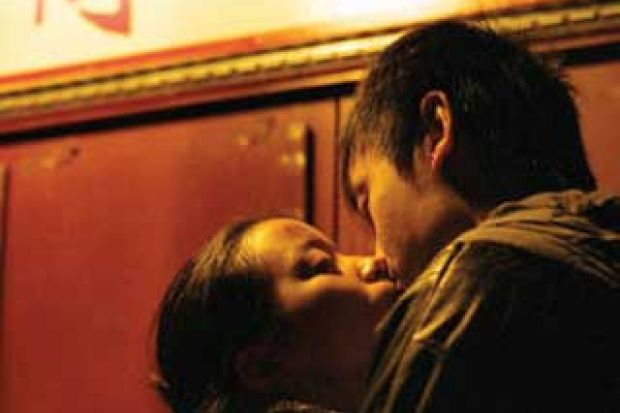This comprehensive and exceptionally interesting book on a universally fascinating topic – sex in another culture – is marred, although not ruined, by what I suppose are professionally necessary social-science words and phrases. Sex in China examines, and does not shrink from describing, heterosexual and homosexual sex, prostitution, the sale and marketing of sex, and differing cultural and generational attitudes.
Elaine Jeffreys and Haiqing Yu, academics based in Australia, convincingly dismiss the notion that what appears to be, and often is, sexual liberation in China, especially for women, is entirely the result of Western influence. They do not deny that certain social forms of dress, dance, attitude and even speech – words like gay and queer now have Chinese phonetic equivalents – are of foreign origin, but they trace the big sexual changes to the Chinese government’s institution of the one-child policy in 1979. This served to limit the size of families, and, by emphasising contraception, encouraged sex in married life for its own sake, bringing about fundamental shifts, in particular to the lives and habits of women.
But although in recent years swinging cities such as Beijing and Shanghai have become home to nightclubs, pole dancing, seemingly unrestrained sex and more openly gay and lesbian young people, the authors show that marriage remains the overwhelming model for both urban and rural Chinese.
Indeed, much of what Jeffreys and Yu describe – the eagerness of parents for their children to be married, gay and lesbian young people’s fears about coming out to their families and in the workplace – often sound like Britain and the US today. When polled, while most Chinese say they do not object to same-sex relationships, they say, too, that they hope those who engage in them will “get over it”. The authors state that “some homosexuals and lesbians [try to] avoid or delay family and social pressures to marry by ‘going out,’ literally moving away…they also practise a classical Chinese aesthetic of…‘don’t ask, don’t tell’ with their families and colleagues.” It appears, moreover, that even many Chinese gays and lesbians view entering heterosexual marriage as “the right thing to do”, forming partnerships of convenience in order to pass as straight to family and work colleagues.
One of the book’s most fascinating reminders is that same-sex sex was practised in the upper reaches of Chinese society going back at least 2,000 years, as lyrical euphemisms such as “cut sleeve”, “eating a peach” and “polishing mirrors” attest. Anyone who has read Chinese historical accounts of deep friendships between and within the sexes, often expressed in poetic form, will be aware of this, but the authors offer a valuable reminder. In the 18th and 19th centuries, the all-conquering Manchus, however, were disgusted by same-sex relations, and after the Communist victory in 1949, homosexuality was condemned as a sign of decadent Western influences.
The authors observe that, as in the West, what appears to be the freeing of young people to engage in unrestrained sex, even in the most “advanced” segments of society, is often at the expense of women, who are still required to live up to male expectations and fantasies in their dress, undress, and self-presentation via the internet and social media. But while “cute” and “soft” remain the most desirable ways for young Chinese women to present themselves, the authors also note the rise of the “cool” androgynous tomboy – although it is young men these cross-dressing young women seek to impress.
Jargon aside, Sex in China is an important and revealing study. It brings together much information scattered through the professional literature – although, as in other books in this Polity series, references are inserted distractingly into the text. The authors show convincingly that recent changes in sexual habits – even when limited or incomplete, as with urban women’s growing freedom to express hitherto repressed sexuality – have indigenous, rather than exclusively Western, roots. Jeffreys and Yu are right to say that “the limits placed on sex for procreation combined with freedom from fear of pregnancy have encouraged the expansion of public discourses on marital sex for pleasure”. And even – for a sophisticated public – sexual variations outside marriage.
Sex in China
By Elaine Jeffreys with Haiqing Yu
Polity, 200pp, £50.00 and £15.99
ISBN 9780745656137 and 6144
Published 6 February 2015
Register to continue
Why register?
- Registration is free and only takes a moment
- Once registered, you can read 3 articles a month
- Sign up for our newsletter
Subscribe
Or subscribe for unlimited access to:
- Unlimited access to news, views, insights & reviews
- Digital editions
- Digital access to THE’s university and college rankings analysis
Already registered or a current subscriber? Login





